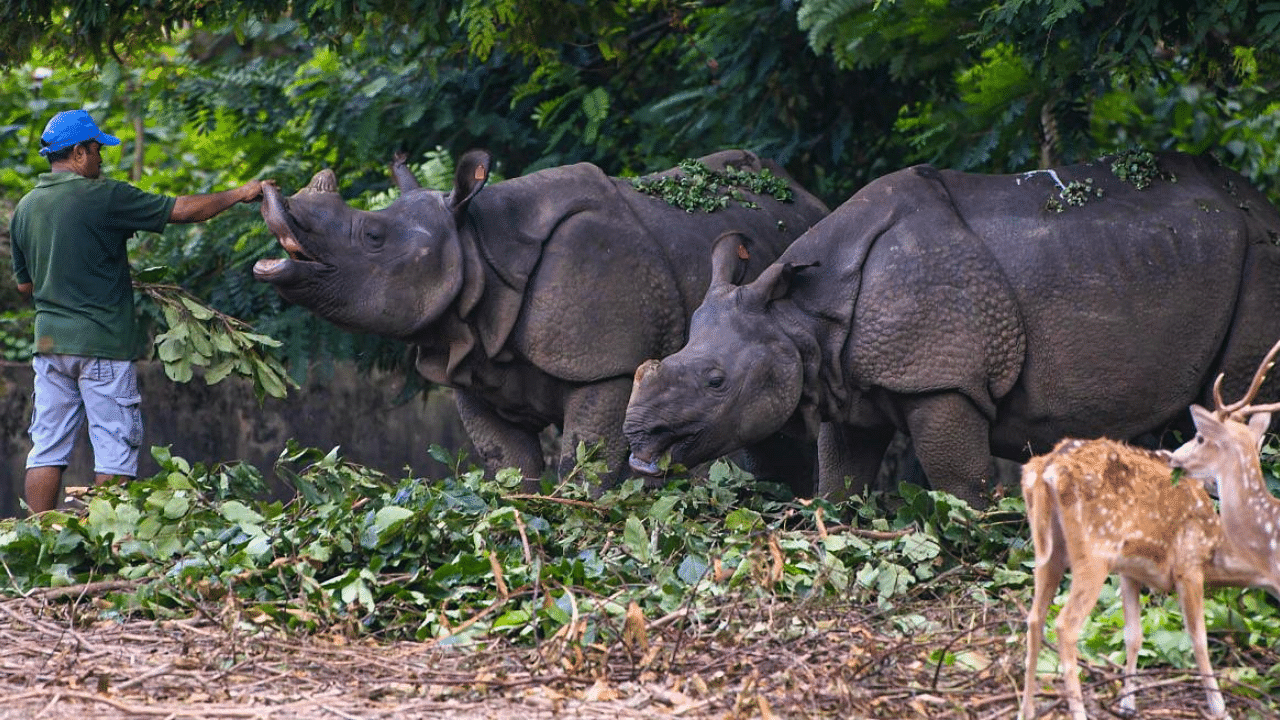
Their sizes and weight are different. But a common myth surrounding rhino horns that they contain medicinal properties has kept them in much demand in the international black markets.
In a bid to bust such myth and resultant poaching of one-horned rhinos, the Assam Cabinet on Thursday approved a proposal to burn 2,479 such horns stockpiled in government treasuries across the state.
The decision was taken at a meeting of the Cabinet chaired by Chief Minister Himanta Biswa Sarma in Guwahati.
"Out of the 2,623 rhino horns available with the treasuries, 2,479 will be destroyed by consigning them to flames in public in order to bust the myths about rhino horns and the resultant poaching. Another 94 will be preserved as heritage pieces for academic purposes while 50 to be reserved for court cases," said a statement issued after the Cabinet meeting.
"The motif of the exercise is to drive home a message loud and clear that these wildlife parts contain no medicinal properties as is being wrongly spread by the gang of smugglers of wildlife parts," said a forest department official.
These horns were stored after the natural deaths of rhinos or those left behind by poachers. The state forest department recently carried out a re-verification exercise of the rhinos' horns by an expert team.
With nearly 3,000 one-horned rhinos in its national parks and wildlife sanctuaries, Assam has become a source of rhino horns for the international gang of wildlife traffickers. Several rhinos have been killed by poachers mainly in Kaziranga National Park, which has over 2,400 one-horned rhinos (2018 Census). Kaziranga is the biggest habitat in the world for one-horned rhinos.
The number of poaching, however, has come down due to strict steps taken in the past few years.
The one-horned rhinos are in Appendix-1 of CITES (Convention on International Trade in Endangered Species of Wild Fauna and Flora) and trade of its body parts is prohibited. But international wildlife smugglers sell them at several thousand dollars, particularly in Southeast Asian nations like China and Vietnam. The horns are reportedly used in making traditional medicines.
The decision to burn the rhino horns has been hailed by wildlife experts. "This is a bold step taken by Assam Cabinet today. Since India is a signatory to CITES, and since Greater One Horn Rhino is in Appendix-1 of CITES List, India can't trade wildlife trophies. The Indian Wildlife (Protection) Act 1972 as amended to date also doesn't allow any trade of rhino horn. As such, rather than keeping a huge stockpile of rhino horns in government treasuries, it is imperative to take bold decision to dispose of the same in public view keeping all transparencies to send a strong message that rhino horn is not medicine," said Bibhab Kumar Talukdar, secretary-general and CEO of Aaranyak, a biodiversity conservation group in Assam. Talukdar is also an expert on rhinos.
Check out the latest DH videos here: